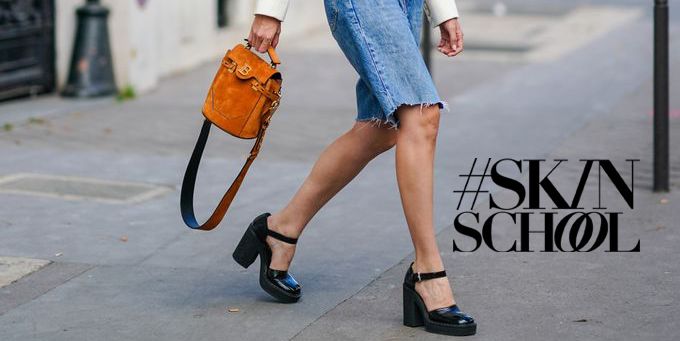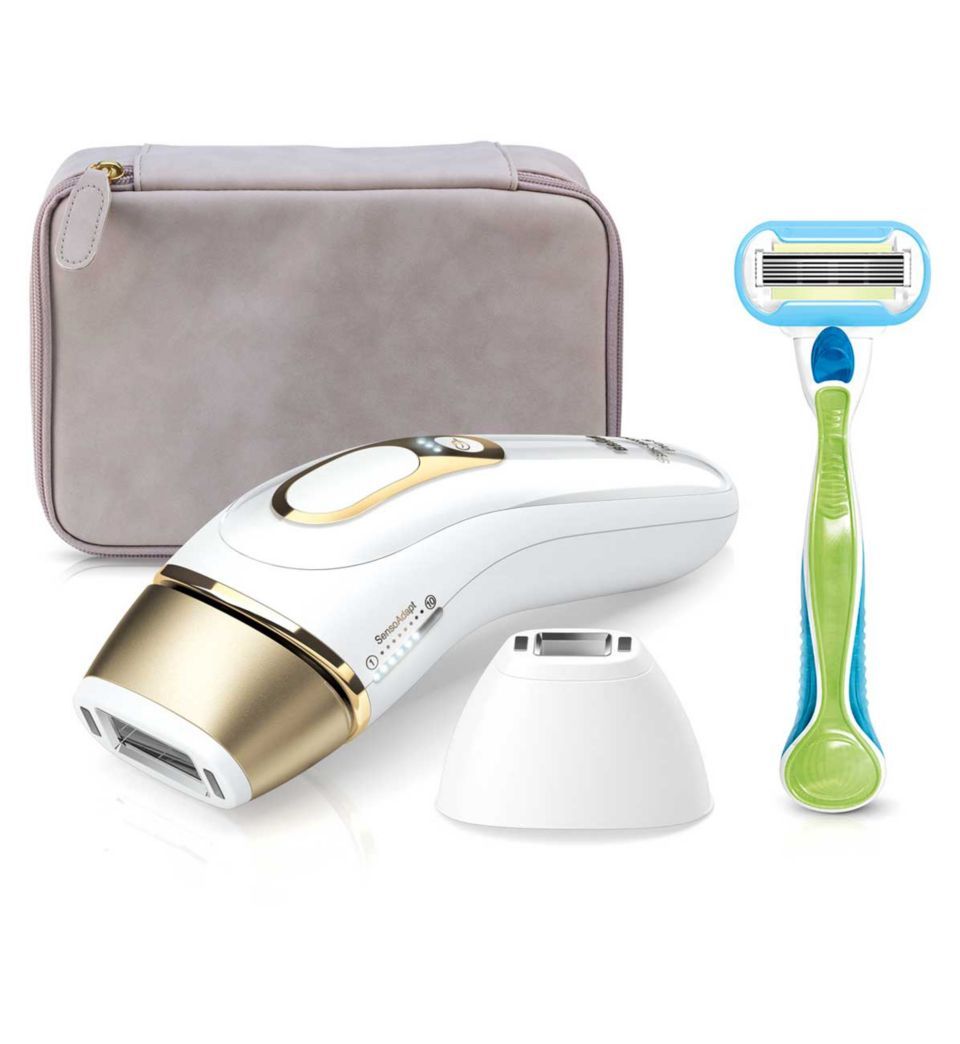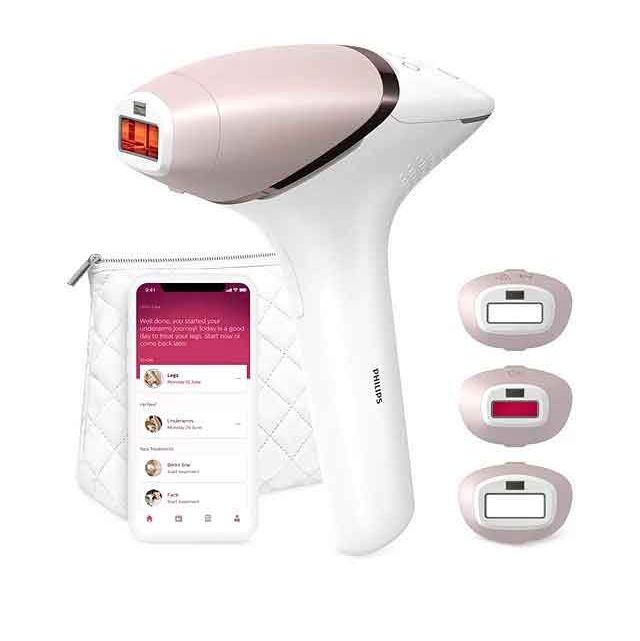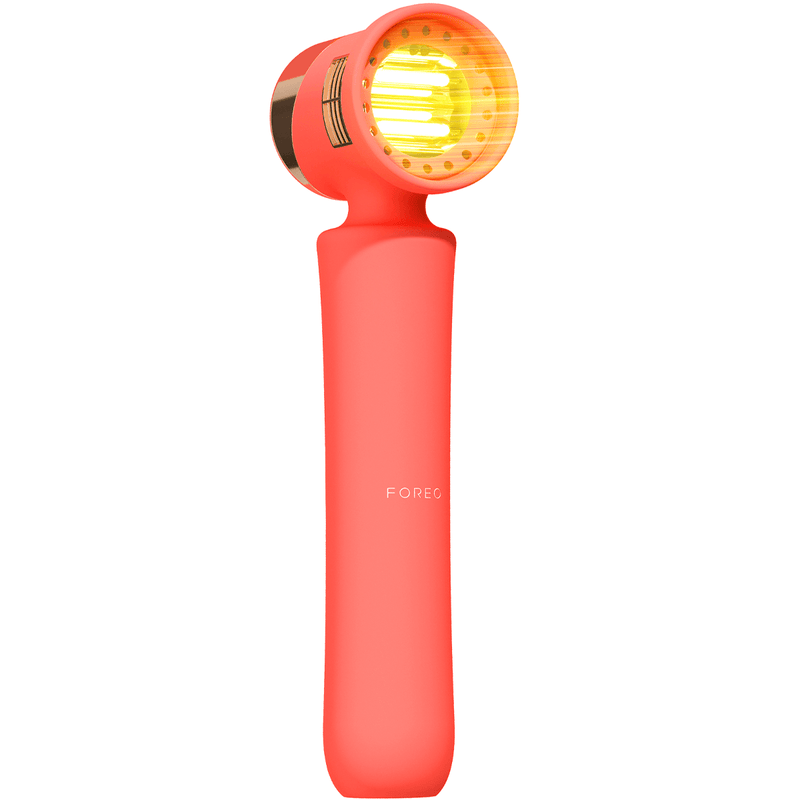IPL hair removal is a treatment offered in clinics up and down the country, and now, some at-home IPL devices are sophisticated enough to rival the professional options offered.
If this hair removal method is something you’re considering, read on for the latest expert advice on everything you need to know about it, from the differences between IPL and laser hair removal to what the treatment actually entails and how long the results last.
What is IPL?
“IPL stands for intense pulsed light and is a type of light therapy that uses strong pulses of light to stimulate or treat various problems within the skin,” explains facialist and laser specialist Debbie Thomas. “Sometimes people think that IPL is a laser as they can do some similar things, but they are not the same. However, the principle of how they work for hair removal is similar: they both direct light at the pigment substance in the hair, causing a burst of heat that damages or kills the cells that cause that hair to grow.”
How does IPL hair removal work?
“The light from an IPL device is absorbed by the pigment in the hair, causing a build-up of energy that turns into heat (think of a black T-shirt on a sunny day),” says Thomas. “The heat travels down the hair and disables or destroys the cells that produce new ones.”
Does IPL hair removal hurt?
You’ve probably heard different answers to this question, as the answer really depends on your pain threshold. The sensation is generally compared to that of an elastic band or hot oil spray – but today’s best IPL devices work so quickly, you’ll barely have time to register the sensation.
How long does IPL hair removal take?
Again, the exact time will vary from person to person depending on various factors. As dermatologist Dr. Anjali Mahto explains, “Your hair cycles just like your skin does. Your hair has a growth phase, a resting phase and a shedding phase. One of the main reasons why you need to have repeated IPL treatments (like laser), is because your hairs are not all in the same phase of the cycle at the same time. So to catch them all, and to get rid of them for good, you almost have to chase the circles. This is why at-home IPL treatments are often repeated every four weeks.”
Who is suitable for IPL hair removal?
Whether you book into a clinic or invest in an at-home IPL device, it’s important to first assess your suitability.
Importantly, not every skin tone is suitable for IPL. as the technology works by targeting the pigment in the hair, there should be a noticeable difference between your skin tone and your hair color. Most experts advise against using an IPL machine on black skin as there is a risk of damage and discoloration, and those with light blonde and red hair should similarly avoid this treatment.
“The fastest and best results are likely to be on someone who has thin, dark hair and relatively fair skin,” notes Dr. Mahto. “If you have underlying skin or medical problems, such as PCOS or thyroid problems, you may find that treatment takes longer. So there are many individual factors to consider.”
It is also useful to know that experts recommend avoiding direct sun exposure, as well as self-tanning, during IPL hair removal treatments.
IPL vs Laser Hair Removal: Which is Better?
When used as hair removal methods, both lasers and intense pulsed light (IPL) use light to heat the hair follicles and prevent regrowth. Although they sound similar, the technology used by each really isn’t, with the main difference being the light source used.
Lucy Xu, Skin Specialist and Founder London Premier Laser & Skin Clinic, explains that typically, IPL technology requires more treatments and can cause less effective hair reduction. “The new laser technologies we work with in the clinic are more advanced and effective than their IPL counterparts with less discomfort (as they are equipped with integrated cooling systems). In addition, it means our machines can treat a wider range of skin and hair types than an IPL device.”
The best IPL hair removal devices
If you prefer the convenience – and cost benefits – of removing your hair at home, you have several good options. There are now plenty of home IPL devices on the market and many can deliver brilliant results. However, they also vary greatly in price, performance and usability, so it pays to do your research beforehand.
When choosing the best IPL device to invest in, the key things to consider are:
1) Lifetime. First and foremost, it is important to check the number of ‘flashes’ your device will emit. The cheapest models on the market may only last you a few years before you need to replace them, but a good IPL device will provide decades of regular use.
2) The power. Many IPL devices come with different intensity levels, meaning you can effectively treat hair on different parts of your body. The best ones, like Braun’s Silk-Expert model, even have a smart sensor and automatically adjust to the right intensity for your skin tone and hair color upon contact.
3) Speed. Considering the speed between each flash may sound redundant, but a slow IPL device makes for a painful treatment, which means you’re less likely to use it regularly.
4) The treatment heads. The best IPL machines will come with different heads to suit your arms, legs and even your upper lip.
The best IPL devices on the market now
How to use an IPL device at home
Usage depends on the selected device and you should always follow the manufacturer’s instructions. But, for example, our beauty director Bridget March tried it Foreo Peach 2 IPL hair removal device device (which he describes as easy to use and virtually painless) and shares the method here.
“You must use Foreo Peach 2 once every fortnight for 12 weeks or until you achieve the required results. It is important to gently exfoliate the skin in the days before use to prevent any ingrown hairs and shave the areas of skin treated during the day.Just before use, you can apply the accompanying brand Cooling Prep Gel designed to relieve sensitivity, improve efficiency and glide. Once absorbed, adjust the IPL intensity on the device (I always go to maximum!) and then – wearing sunglasses to protect your eyes – place the device on the skin and press and release the flash button for small areas or press and hold the flash button for larger areas like the legs, which works from the bottom up.”








